The Model for 15th-Century Humanistic Script and Decoration – A large bifolium from a decorated Lectionary, in Latin [Italy, 12th century, first half]
£2,200.00
PHYSICAL DESCRIPTION AND MATERIALITY
Parchment, most of a bifolium, c.345×575mm, lacking only the upper margin of one leaf,
ruled in drypoint for two columns of 39 lines per page, written above top line in a fine rounded late Caroline bookhand.
This bifolium beautifully exemplifies how a medieval manuscript bifolium could be used as a book-covering: because it has not been flattened-out, it preserves its shape, with the turn-ins still folded-over. It is also provides an unusually clear example of how the host volume was bound: we can see that it was sewn on three broad straps, that passed through the covering at the spine joins, extended a few centimetres horizontally, and then back through the covering to be attached to the boards. A third nice feature is that we can see how the binder has carefully chosen a bifolium of the appropriate size: without needing to trim it, the blank margins of the bifolium form the turn-ins and the blank margins between the inner columns of text formed the blank spine of the host volume.
Any spine-title is no longer legible, but between the columns of the back(?) cover is “SANCTUS F[? … ]IS IN Libro [ … ]”.
SCRIPT
In its overall appearance, with very rounded letters and generously-spaced words and lines, with short ascenders and descenders; the script of this bifolium is comparable to that of no. 3 above. Here ‘d’ is usually upright, but sometimes sloping, round ‘s’ occurs sometimes, but not always, at the end of words, ‘r’ descends below the line, but tall ‘s’ only does when it is part of an ‘st’ ligature, round ‘r’ is not used, even after ‘o’, double ‘i’ is dotted, ‘z’ is like an angular ‘3’ descending below the line in both majuscule and minuscule form, double ‘p’ is well spaced (‘dupplex’) but other adjacent round letters e.g. ‘ho’ sometimes touch, and the upper cross-strokes of many letters such as ‘e’, ‘r’, and ‘t’ touch the following letter.
TEXT
First leaf (the first few lines obscured by the folded-over turn-in; then):
“post eius ascensionem … causa inclinaretur”
i.e. part of Remigius’s Commentary on II Corinthians 6
Second leaf:
“plus desiderant habere quam habeant … et recipere misteria diuinæ. Lectio sancti euangelii secundum Matheum. In illo tempore. Ductus est Ihesus in desertum … Homelia Brunonis ępiscopi. BAPTIZATUS Ihesus confestim ascendit de aqua … Quid est enim quod baptizato domino celi aperiuntur? … [the easily visible text ending a little after:] his tribus eos temptando”
i.e. a later part of Remigius’s Commentary on II Corinthians 6; Matthew 3:16–17 introduced by a rubric; and Bruno of Asti’s Commentary on Matthew, introduced by a rubric and a large decorated initial.
From the gap in the text we can deduce that these two pages were probably originally separated by just one intervening bifolium.
DECORATION
Decorated with a five-line initial in pale yellow, with unpainted foliate forms against a particoloured background of red, blue, green, and purple.
PROVENANCE
(1) A turn-in has a 17th(?)-century shelfmark “L.g.9.”, presumably from an institutional library.
(2) Sotheby’s, 8 July 2014, lot 4 (col. ill.).
This type of script and decoration are precisely the 12th-century models on which 15th-century Italian Humanistic manuscripts were based: the Humanists wanted to revive the clarity and elegance of an ideal that, with the evolution of Gothic script, had become ugly and difficult to read. The initial here is the ancestor of the classic humanistic initial of the type known as ‘white vine’, ‘white vine-stem’, or ‘bianchi girari’, in which the vegetal forms are depicted by unpainted parchment against a multi-coloured ground.
Italian 12th-century manuscript fragments appear on the market with some frequency, but rarely do they have an initial that so neatly allows comparison with the decoration of 15th-century manuscripts and printed books.
Be the first to review “The Model for 15th-Century Humanistic Script and Decoration – A large bifolium from a decorated Lectionary, in Latin [Italy, 12th century, first half]” Cancel reply
Product Enquiry
Related products
C12th - C13th manuscripts
C14th -C16th manuscripts
Illuminated inital 1500 huge leaf on vellum, from Siena or Florence.
C14th -C16th manuscripts
C12th - C13th manuscripts
Huge C12th bifolium of St Augustine’s Tractate 94 on St. John’s gospel.
C12th - C13th manuscripts
Elegant English Early Gothic Script from late C12th Passionale – Paulinus of Milan

![The Model for 15th-Century Humanistic Script and Decoration – A large bifolium from a decorated Lectionary, in Latin [Italy, 12th century, first half] The Model for 15th-Century Humanistic Script and Decoration – A large bifolium from a decorated Lectionary, in Latin [Italy, 12th century, first half]](https://butlerrarebooks.co.uk/wp-content/uploads/2021/04/IMG_0688.jpg)
![The Model for 15th-Century Humanistic Script and Decoration – A large bifolium from a decorated Lectionary, in Latin [Italy, 12th century, first half] The Model for 15th-Century Humanistic Script and Decoration – A large bifolium from a decorated Lectionary, in Latin [Italy, 12th century, first half]](https://butlerrarebooks.co.uk/wp-content/uploads/2021/04/IMG_0686.jpg)
![The Model for 15th-Century Humanistic Script and Decoration – A large bifolium from a decorated Lectionary, in Latin [Italy, 12th century, first half] The Model for 15th-Century Humanistic Script and Decoration – A large bifolium from a decorated Lectionary, in Latin [Italy, 12th century, first half]](https://butlerrarebooks.co.uk/wp-content/uploads/2021/04/IMG_0687.jpg)
![The Model for 15th-Century Humanistic Script and Decoration – A large bifolium from a decorated Lectionary, in Latin [Italy, 12th century, first half] The Model for 15th-Century Humanistic Script and Decoration – A large bifolium from a decorated Lectionary, in Latin [Italy, 12th century, first half]](https://butlerrarebooks.co.uk/wp-content/uploads/2021/04/IMG_0689.jpg)

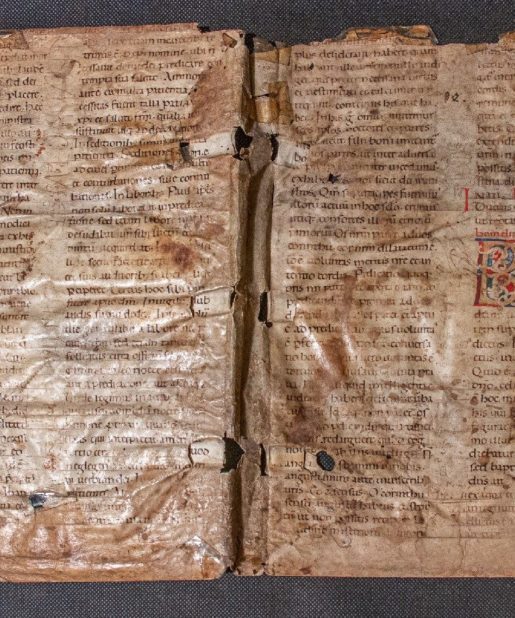


![The Model for 15th-Century Humanistic Script and Decoration – A large bifolium from a decorated Lectionary, in Latin [Italy, 12th century, first half] The Model for 15th-Century Humanistic Script and Decoration – A large bifolium from a decorated Lectionary, in Latin [Italy, 12th century, first half]](https://butlerrarebooks.co.uk/wp-content/uploads/2021/04/IMG_0977-100x100.jpg)
![The Model for 15th-Century Humanistic Script and Decoration – A large bifolium from a decorated Lectionary, in Latin [Italy, 12th century, first half] The Model for 15th-Century Humanistic Script and Decoration – A large bifolium from a decorated Lectionary, in Latin [Italy, 12th century, first half]](https://butlerrarebooks.co.uk/wp-content/uploads/2021/01/IMG_0696-100x100.jpg)
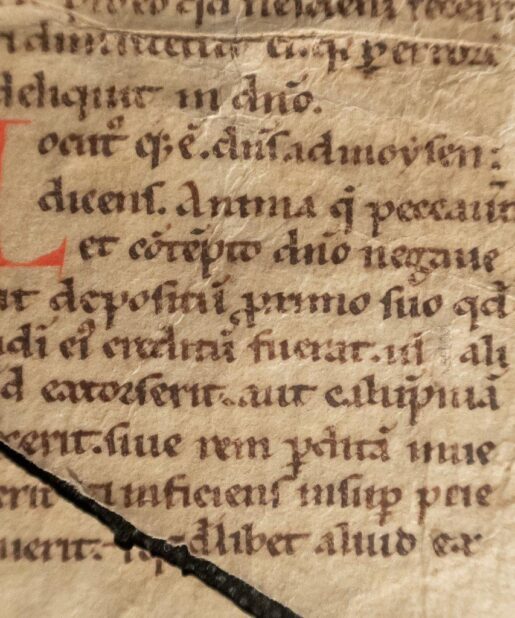
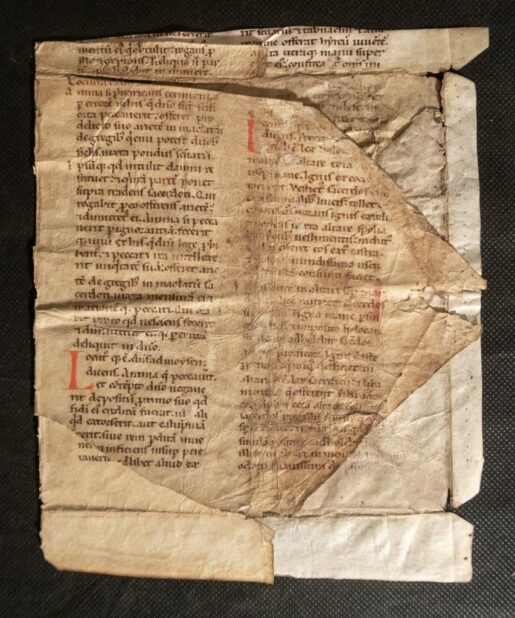


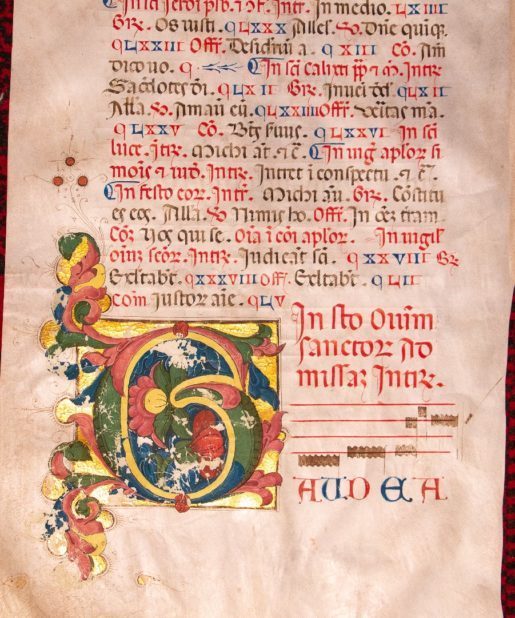

![The Annunciation to Zechariah, on a bifolium from an Antiphonary, in Latin [Germany or Austria, (mid-?)15th century] The Annunciation to Zechariah, on a bifolium from an Antiphonary, in Latin [Germany or Austria, (mid-?)15th century]](https://butlerrarebooks.co.uk/wp-content/uploads/2021/04/IMG_0977-515x618.jpg)
![The Annunciation to Zechariah, on a bifolium from an Antiphonary, in Latin [Germany or Austria, (mid-?)15th century] The Annunciation to Zechariah, on a bifolium from an Antiphonary, in Latin [Germany or Austria, (mid-?)15th century]](https://butlerrarebooks.co.uk/wp-content/uploads/2021/04/IMG_0769-515x618.jpg)
![The Death of Ptolemy, a miniature on a cutting from Laurent de Premierfait, [France, probably Troyes, c.1470] The Death of Ptolemy, a miniature on a cutting from Laurent de Premierfait, [France, probably Troyes, c.1470]](https://butlerrarebooks.co.uk/wp-content/uploads/2021/01/IMG_0782-515x618.jpg)
![Jonah Kneeling in Prayer Before God on a bifolium from a Bible in Latin [Northern Spain (diocese of Álava?), late 13th or early 14th century] Jonah Kneeling in Prayer Before God on a bifolium from a Bible in Latin [Northern Spain (diocese of Álava?), late 13th or early 14th century]](https://butlerrarebooks.co.uk/wp-content/uploads/2021/12/57A4063-scaled-515x618.jpg)
![Jonah Kneeling in Prayer Before God on a bifolium from a Bible in Latin [Northern Spain (diocese of Álava?), late 13th or early 14th century] Jonah Kneeling in Prayer Before God on a bifolium from a Bible in Latin [Northern Spain (diocese of Álava?), late 13th or early 14th century]](https://butlerrarebooks.co.uk/wp-content/uploads/2021/12/57A4056-2-515x618.jpg)

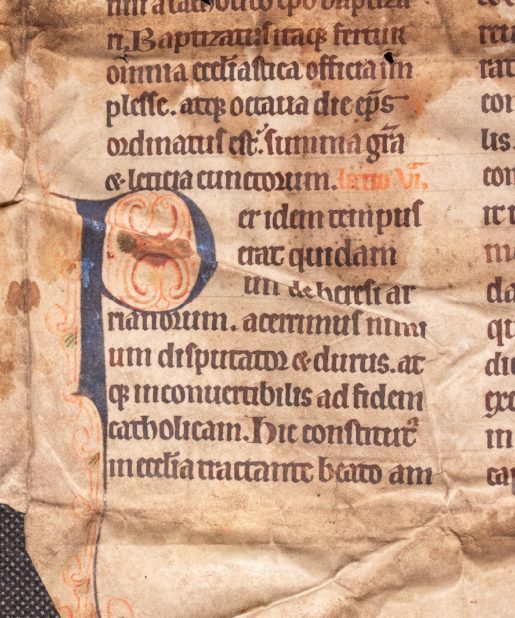

Reviews
There are no reviews yet.